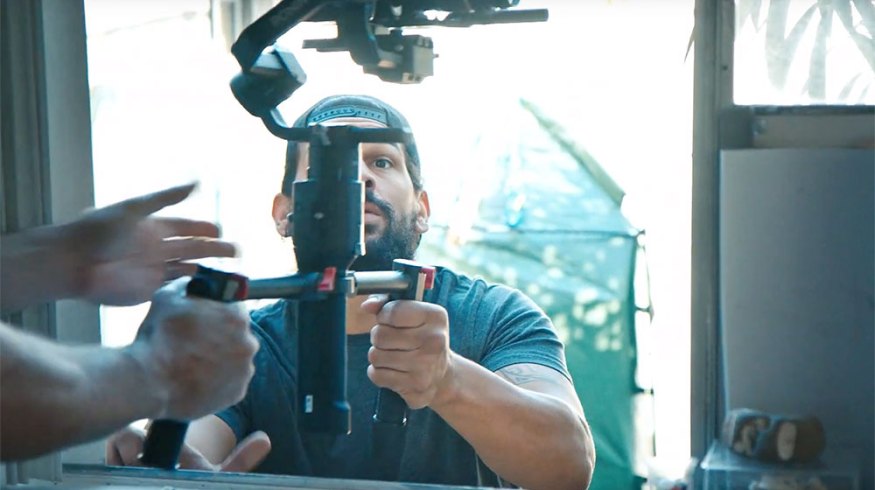
Learning Curve: Managing a Successful Gimbal Handoff
The classic gimbal handoff is a great technique that can add style and elegance to an otherwise-pedestrian tracking shot.
If you’ve ever marveled at a shot that seemingly moves a camera through a wall or out a window, it was probably a gimbal handoff. One camera operator passes a stabilized camera to another operator as seamlessly as possible, while tracking (or following) a subject.
I set out to try a gimbal handoff on my own to see how steep the learning curve was. Here’s what I learned.
First Attempt
Rather than trying a full cinema camera rig balanced on a large-capacity gimbal, we elected to use the smaller Black Magic Pocket Cinema Camera 4k on a Ronin-S gimbal. This would allow us to work with a lighter weight rig and pass it through a smaller window.
Our first attempt wasn’t great — there was a lot of shake in the camera when I let go and the other operator took over. We attributed this to the fact that there wasn’t really room for both of our hands to be on the Ronin-S handle at the same time.
Second Attempt
So, we added an accessory called a “T Bar” that adds additional handles to the Ronin, and the next take was a lot smoother.
I was able to keep my hand on one handle as the second operator took over the weight, and kept it there until the camera was well out of the window. This made the transition more seamless.
A happy accident that we discovered in the shot was when our actor had to slow down to open the door as he exited the building. This gave us an extra couple of seconds to get our grips and transfer the gimbal. If he had been running, and the door had been open, we would’ve had to use a different technique (such as a cable cam), that could maintain the same speed. So when you can, work small hesitations into your actor’s movement while tracking with a gimbal handoff.
All in all, it took us about four attempts to get an acceptably smooth shot, so the learning curve wasn’t too steep after all — even if you haven’t really used gimbals before. We definitely gave ourselves a head start by using a small camera, shooting in slow-motion to cover smaller shakes, and having the actor slow down to accommodate the handoff.
I encourage you to experiment with the gimbal handoff and see what results you can achieve.
Interested in the tracks we used to make this video?
- “Colorful Modular” By Ulas Pakkan
- “Ghost” By Wolves
- “The Riddler” By Joseph
Looking for other filmmaking tips and tricks? Check these out.






